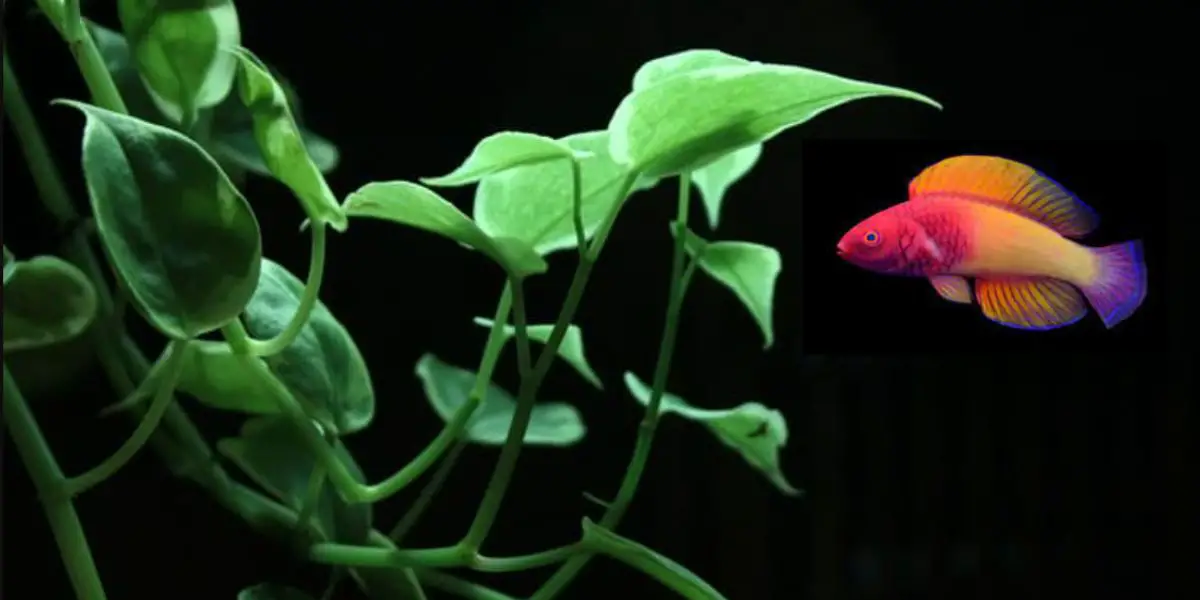If you’re an aquarium enthusiast looking to enhance the beauty and health of your underwater ecosystem, hanging pothos in your aquarium can be an excellent choice. Pothos, scientifically known as Epipremnum aureum, is a versatile plant that can thrive both in soil and water. When suspended in your aquarium, it not only adds a touch of lush greenery but also contributes to the well-being of your aquatic inhabitants. In this guide, we’ll walk you through the steps of how to hang pothos in your aquarium, creating a serene and captivating aquatic environment.
Why Hang Pothos in Your Aquarium?
Before we dive into the step-by-step process, let’s understand why adding pothos to your aquarium is beneficial:
- Natural Filtration: Pothos is an excellent natural filter. Its roots absorb excess nitrates and other nutrients, helping to keep your aquarium water clean and clear.
- Oxygenation: Through photosynthesis, pothos release oxygen into the water, improving the overall oxygen levels for your fish and other aquatic organisms.
- Aesthetic Enhancement: The trailing vines and lush green leaves of pothos add a natural and visually appealing element to your aquarium, creating a more attractive underwater landscape.
Now that you know the advantages, let’s proceed with the steps to hang pothos in your aquarium.
Step-by-Step Guide: Hanging Pothos in Your Aquarium
Materials You’ll Need:
- Pothos cuttings with healthy leaves and roots.
- Aquarium-safe container or planter.
- Aquarium suction cups or clips.
- Scissors or pruning shears for maintenance.
1. Choose Your Pothos Cuttings:
- Select healthy pothos cuttings with vibrant green leaves and well-developed roots. Healthy cuttings are more likely to thrive in your aquarium.
2. Prepare the Container:
- Ensure the chosen container is aquarium-safe and won’t leach harmful substances into the water. Ceramic or plastic containers work well.
- Attach aquarium suction cups or clips to the container. These will be used to secure it inside the aquarium.
3. Trim and Rinse the Pothos Cuttings:
- Trim the pothos cuttings to the desired length, ensuring they fit comfortably within the container.
- Remove any leaves that would be submerged in water, leaving a few inches of bare stem. This prevents rotting.
- Rinse the cuttings thoroughly under running water to remove any soil or debris.
4. Position the Container:
- Choose a suitable location within your aquarium to place the container. It should be partially submerged in the water, allowing the roots access to the aquatic environment.
5. Secure the Container:
- Use the attached suction cups or clips to secure the container in its chosen location. Ensure it is stable and won’t float or tip over.
6. Insert the Pothos Cuttings:
- Insert the prepared pothos cuttings into the container, making sure the bare stems are submerged in the water while the leaves remain above the surface. This prevents the leaves from decaying in the water.
7. Monitor and Maintain:
- Regularly check the pothos for growth and trim the vines to prevent overcrowding.
- Keep an eye on the water quality, as pothos can absorb excess nutrients. Adjust your aquarium maintenance routine accordingly.
Conclusion
Hanging pothos in your aquarium is a simple yet effective way to enhance the beauty and health of your underwater world. With its natural filtration capabilities and aesthetic appeal, pothos can transform your aquarium into a thriving green oasis. Follow the steps outlined in this guide, and you’ll soon enjoy the benefits of this unique aquatic addition.
FAQs
How often should I trim my pothos in the aquarium?
Trim your pothos as needed to prevent overcrowding. Depending on the growth rate, this could range from every few weeks to a few months.
Can I use any pothos variety in my aquarium?
Yes, most pothos varieties, including Golden Pothos and Marble Queen Pothos, can thrive in aquariums as long as their roots are submerged.
Do I need special lighting for pothos in the aquarium?
Pothos can thrive in low to moderate lighting conditions, making them suitable for most aquarium setups.
Can pothos replace a traditional filter in my aquarium?
While pothos can help with natural filtration, it’s not a substitute for a proper aquarium filter. It complements the filter by removing excess nutrients.
Is pothos safe for all types of fish and aquatic animals?
Pothos is generally safe for most fish and aquatic organisms. However, it’s essential to monitor your specific species’ compatibility with aquatic plants.

